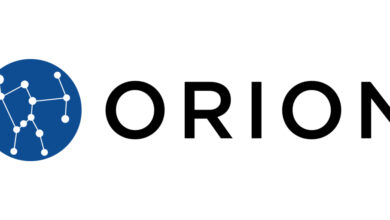Mobile Edge Computing Global Market Report 2022: Rising Application of 5G and Industrial IoT Services Among End-user Industries Bolsters Growth – ResearchAndMarkets.com

DUBLIN–(BUSINESS WIRE)–The “Mobile Edge Computing Market – Growth, Trends, COVID-19 Impact, and Forecasts (2022 – 2027)” report has been added to ResearchAndMarkets.com’s offering.
The mobile edge computing market is expected to register a CAGR of 30.64% during the forecast period. Multi-access edge computing (MEC), popularly known as mobile edge computing, is a form of edge computing that brings cloud computing to the network’s edge to increase its functionality.
Key Highlights
- The demand for digital media services is increasing as the number of wireless subscriptions grows exponentially. Mobile wireless networks have advanced tremendously to meet this growing need. Enterprises across industries are beginning to drive new levels of performance and productivity by deploying different technological innovations, like sensors and other data-producing and collecting devices, along with analysis tools. Traditionally, data management and analysis are performed in the cloud or data centers. However, the scenario seems to be changing with the increasing penetration of network-related technologies and initiatives, such as smart manufacturing and smart cities.
- Furthermore, with the current 4G networks reaching their maximum limit, 5G will have to manage online traffic far more intelligently, in which mobile edge computing will play a major role. In addition to managing the data load, MEC is expected to significantly reduce the latency in 5G networks.
- In the telecom industry, edge computing, also known as mobile edge computing, MEC, or multi-access edge computing, offers execution resources (compute and storage) for applications with networking close to end users, often within or at the boundary of operator networks. Edge solutions offer key advantages: low latency, high bandwidth, device processing, data offloading, and reliable computing and storage.
- As with any network technology/ architecture, MEC is prone to various threats and hardware that lay in wait owing to its lack of security framework. A wide variety of threats and hazards could potentially occur in the MEC network. However, the most common attacks that hinder the market’s growth can be narrowed down to compromised protocols, falsified information and logs, loss of policy enforcement, man-in-the-middle, and data loss.
Key Market Trends
Rising Application of 5G and Industrial IoT Services Among End-user Industries
- Industry 4.0, powered by the Internet of Things (IoT) movement, involves interconnecting various technological platforms and presents the ability to interface with manufacturing equipment located anywhere in the world, from anywhere in the world. With Industry 4.0 transforming industries, from legacy systems to smart components and machines to facilitating digital factories and developing an ecosystem of connected plants and enterprises, MEC platforms find exciting opportunities for deployment.
- IoT in industrial automation is expected to derive maximum benefit from 5G services. The functionality to support this segment is currently being defined in 3GPP, influenced by Industry 4.0 initiatives and industry bodies, such as 5G-ACIA. It will be a 5G-specific segment for local area use cases and private network deployments.
- In the healthcare industry, IoT enables providers to monitor patient health remotely through connected medical solutions, along with real-time data collection and extended access to real-time monitoring and analysis. The healthcare sector is witnessing an increase in the deployment of 5G services. For instance, Samsung Medical Center and Korea’s largest telecommunications company, KT Corporation, announced that they have partnered to develop smart patient care, 5G-powered innovative medical practices, and improve hospital operational efficiency.
- Energy and utility companies are driving the pack in actively improving business cases, services, and partnerships around 5G. According to Infosys, 56% of the energy and utility companies are defining use cases for 5G, and 20% have already established their 5G service portfolios along with the ecosystem partners. The company further anticipates that smart cities will create USD 100 billion in utility revenue. As electricity distributors manage poles and wires to all parts of the cities and neighborhoods, they could leverage their assets to offer smart surveillance solutions or smart lighting solutions to communities, law enforcement agencies, and enterprises.
North America is Expected to Hold Major Share
- North America is home to three major cloud service providers: Amazon Web Services, Microsoft Azure, and Google Cloud. In addition, the region is home to major mobile edge computing market vendors such as Verizon Communications Inc., AT&T Inc., etc., which positively impacts the mobile edge computing market in the region. This region is also considered to be the hub for all major technological innovations, such as 5G, autonomous driving, IoT, blockchain, gaming, and AI, among others.
- Countries like the United States and Canada are known to be early adopters of new technologies. Most new technologies at present are data intensive. They create, process, and transfer large amounts of data, due to which the current infrastructure, consisting of data centers and the cloud, is inching toward its maximum capacity. With the amount of new data generated and used presently, these infrastructures would not be able to support their customers’ needs. Of all the parameters involved, latency is going to be the most crucial factor for business.
- Since most companies rely on real-time data access and processing, low latency can disrupt their entire process. This is where edge computing has helped infrastructure developers address the issue. With new technologies maturing, edge computing is expected to have a significant impact.
- Further, mobile edge computing allows consumers and businesses from various sectors to capitalize on the power of a data center in near real-time, unlocking the further potential for fast, low-latency mobile networks to empower transformative technologies for everything from home entertainment and gaming to healthcare and agriculture.
Companies Mentioned
- Nokia Corporation
- Telefonaktiebolaget LM Ericsson
- Saguna Networks Ltd.
- AT&T Inc.
- Huawei Technologies Co. Ltd.
- Verizon Communication Ltd
- SMART Embedded Computing (Artesyn Embedded Technologies)
- ZephyrTel Inc. (ESW Capital Group Company)
- Vodafone Ltd
For more information about this report visit https://www.researchandmarkets.com/r/nnl0g8
About ResearchAndMarkets.com
ResearchAndMarkets.com is the world’s leading source for international market research reports and market data. We provide you with the latest data on international and regional markets, key industries, the top companies, new products and the latest trends.
Contacts
ResearchAndMarkets.com
Laura Wood, Senior Press Manager
[email protected]
For E.S.T Office Hours Call 1-917-300-0470
For U.S./ CAN Toll Free Call 1-800-526-8630
For GMT Office Hours Call +353-1-416-8900





